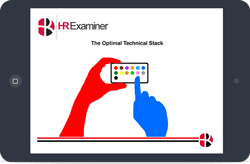
As we get buried in massive volumes of information, graphic and narrative visualization techniques are the keys to survival.
Tapestry Tidbits ( #tapestryconf )
Last week, I spent a day in Nashville with the 100 brightest minds in graphic and narrative visualization. The subject is important to HR and the rest of the organization. As we get buried in massive volumes of information, graphic and narrative visualization techniques are the keys to survival.
Here are the big takeaways:
- Data doesn’t tell you about itself. You have to coax it into a story. The biggest single difficulty we face is learning how to ask the right questions. Once we have that, the data starts to shape itself.
- Asking great questions is not a skill that contemporary organizations value highly. Great questions require rethinking conventional wisdom and challenging the status quo. That usually scares someone.
- Enormous data flows and new tools to manipulate them make it possible to ask and answer questions that we currently think are impossible. Still, the biggest single limiter is imagining the questions.
- That means that the state of the art in graphic and narrative visualizations for business is somewhat primitive. There is a great deal of forward progress in tools that handle stories with beginnings, middles and ends. Most business questions don’t exactly answer that way. They are more like stories that end with a dynamic situation.
- Business visualizations (both graphic and narrative) require the ability to tolerate and manipulate ambiguity at the end of the story. Their purpose is to inform decision making rather than to comprehensively describe a topic or situation.
- There were lots of people showing off interesting experiments. From a business person’s point of view, they all looked like interesting displays that didn’t really solve a problem or help solve one. That will come in time.
- From an HR tactical perspective, this edge of the world is still in the early adopter phase. But, like a number of recent technologies, the uptake will be fast. Narrative and Graphic Visualization are the keys to HR’s long term relevance. They are the gateway to demonstrating and understanding HR’s impact on essential business outcomes.
- Most HR metrics focus on transactions and their averages. While this is interesting to HR management, it looks like navel gazing to the rest of the organization. None of HR’s customers experience averages. Their dependence on getting actual results which are based on their rhythms is not helped by a view of HR averages.
- For example, recruiting happens seasonally for most bulk positions. So, a hiring manager usually experiences peaks and valleys in hiring demand. Average performance is neither interesting or useful.
Tableau funded my attendance at this amazing conference. I created a live blog of the event which was in last week’s HRExaminer











